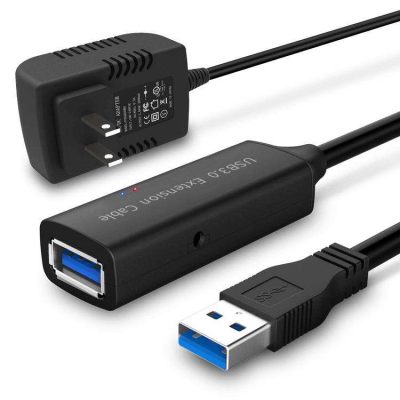The Future of USB Extension Cables: What You Need to Know
As technology continues to evolve, USB extension cables are also advancing to meet new demands and enhance connectivity. Here’s what you need to know about the future of USB extension cables:
1. Increased Data Transfer Speeds
- USB 4.0: The latest USB 4.0 standard promises data transfer speeds up to 40 Gbps, significantly faster than USB 3.2’s 20 Gbps. Future USB extension cables will need to support these higher speeds to ensure seamless data transfer.
- Backward Compatibility: Despite the advancements, future cables will maintain compatibility with previous USB versions (e.g., USB 2.0, USB 3.0) to support a wide range of devices.
2. Enhanced Power Delivery
- Higher Power Output: With the rise of power-hungry devices, future USB extension cables will support higher power delivery capabilities. USB Power Delivery (PD) allows for up to 100W power transfer, which will become more common in extension cables.
- Smart Charging: Future cables will incorporate smart charging technologies to optimize power delivery, ensuring that each connected device receives the appropriate amount of power without risk of overcharging or overheating.
3. Improved Durability and Build Quality
- Advanced Materials: The use of more durable and flexible materials, such as Kevlar or reinforced nylon braiding, will make future USB extension cables more resistant to wear and tear.
- Enhanced Connectors: Future connectors will be designed to withstand more frequent plugging and unplugging, with improved strain relief features to prevent breakage.
4. Greater Focus on Signal Integrity
- Active Cables: As data rates and power requirements increase, active USB extension cables with built-in signal boosters and repeaters will become more prevalent. These cables amplify the signal to maintain integrity over longer distances.
- Better Shielding: Improved shielding techniques will reduce electromagnetic interference (EMI) and crosstalk, ensuring stable and reliable connections even in environments with many electronic devices.
5. Increased Flexibility and Versatility
- Universal Compatibility: Future USB extension cables will aim to be more universally compatible, supporting a wider range of devices and peripherals, including those with USB-C and other emerging standards.
- Multi-Functionality: Expect to see cables that offer multiple functionalities, such as combining data transfer, power delivery, and video output capabilities in a single cable.
6. Sustainability and Eco-Friendliness
- Recyclable Materials: There will be a push towards using recyclable and eco-friendly materials in cable manufacturing, reducing environmental impact.
- Energy Efficiency: Future USB extension cables will focus on energy efficiency, minimizing power loss during transmission and reducing the overall energy consumption of connected devices.
7. Integration with Emerging Technologies
- IoT and Smart Devices: As the Internet of Things (IoT) continues to grow, USB extension cables will be designed to seamlessly integrate with smart home and office devices, ensuring smooth communication and power delivery.
- AR/VR Compatibility: The rise of augmented reality (AR) and virtual reality (VR) will require high-speed, low-latency connections. Future cables will be optimized for these applications, supporting the bandwidth and power requirements needed for immersive experiences.
Conclusion
The future of USB extension cables is set to be defined by increased data transfer speeds, enhanced power delivery, improved durability, better signal integrity, greater flexibility, sustainability, and integration with emerging technologies. These advancements will ensure that USB extension cables continue to be a vital component of our connectivity infrastructure, supporting the growing demands of modern devices and applications. Staying informed about these developments will help you choose the best cables for your needs and keep your devices connected efficiently and reliably.







